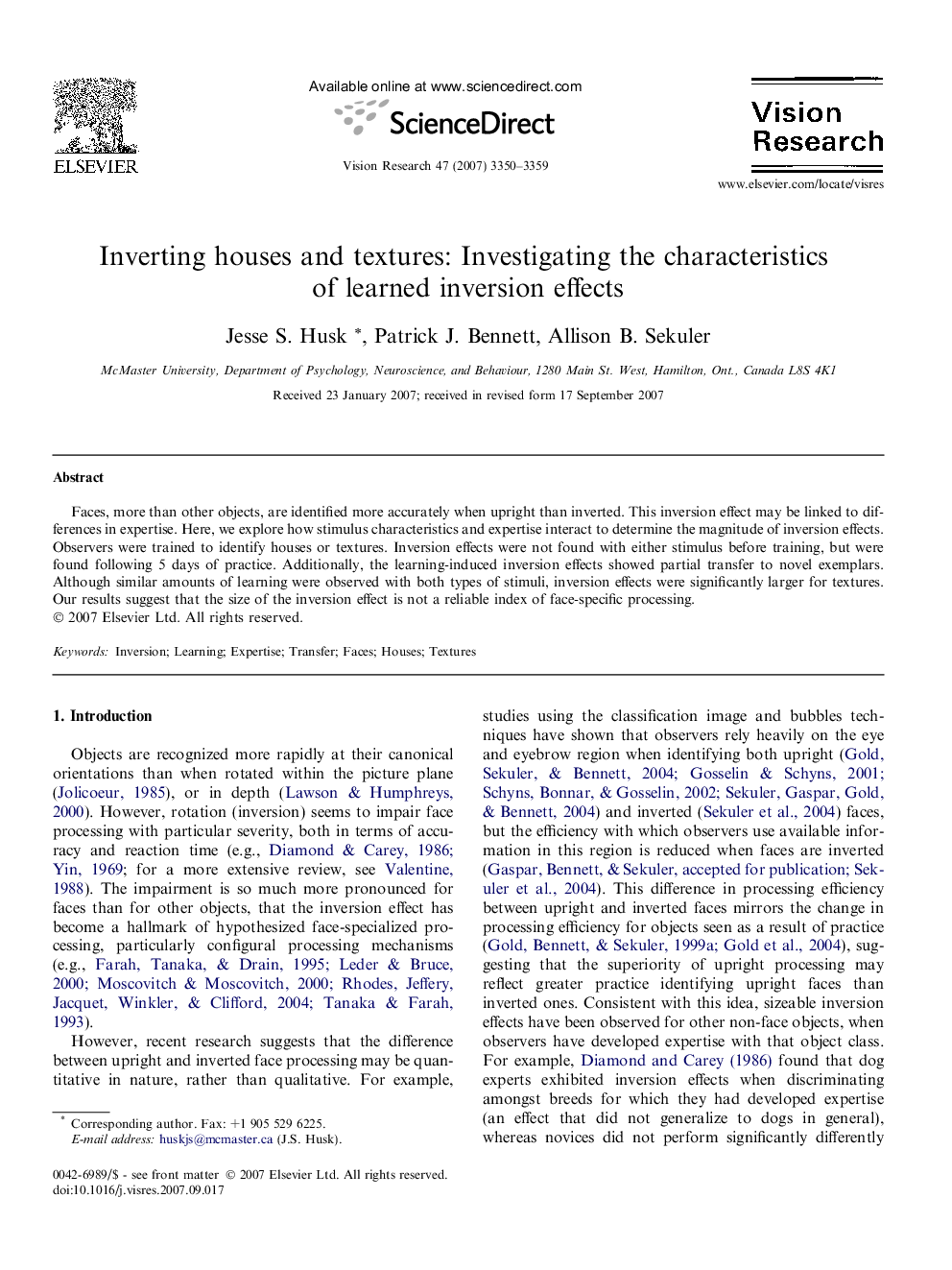| Article ID | Journal | Published Year | Pages | File Type |
|---|---|---|---|---|
| 4036020 | Vision Research | 2007 | 10 Pages |
Faces, more than other objects, are identified more accurately when upright than inverted. This inversion effect may be linked to differences in expertise. Here, we explore how stimulus characteristics and expertise interact to determine the magnitude of inversion effects. Observers were trained to identify houses or textures. Inversion effects were not found with either stimulus before training, but were found following 5 days of practice. Additionally, the learning-induced inversion effects showed partial transfer to novel exemplars. Although similar amounts of learning were observed with both types of stimuli, inversion effects were significantly larger for textures. Our results suggest that the size of the inversion effect is not a reliable index of face-specific processing.
